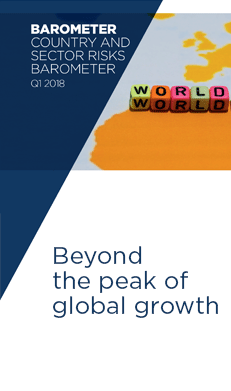To grow out of its debt, Southern Europe must look beyond tourism and solve its demographic crisis

While the good tourism season benefits Southern European economies, their tourism-led growth arises questions on their structural vulnerabilities that could shape their long-term sustainability. From a broken engine a decade ago, Southern Europe has become the workhorse of the post-pandemic European recovery. In 2021-23, Italy, Spain, Greece and Portugal have consistently accounted for between a fourth and half of EU GDP growth. Mediterranean countries benefit from a steady recovery in the tourism sector, enabling them to pick up the slack in driving EU growth at a time when Europe’s traditional economic core is struggling (Germany, in particular) to go back on its feet due to manufacturing gloom. While tourism had plummeted during the pandemic, tourist numbers are now mostly back to pre-pandemic levels. The figures for the first half of 2023 confirm a record summer, from which Southern Europe benefited even more. This upturn is also driven by the return of international travelers, which remains slightly below pre-pandemic levels at EU level but above for Southern Europe.
Tourism recovery is expected to play a central role in the growth resilience of Southern Europe whose economies are particularly dependent. The sector accounts for over 10% of the GDP of countries in this region and constitutes a significant engine of their economy through numerous of channels. It can be a palliative to stimulate Southern European countries growth. However, this favorable momentum could come to an end because of uncertain outlook but also of structural pitfalls. The scope for tourism growth is likely to be increasingly limited while countries comparative advantage may be affected by changes in travel habits due to today’s inflationary world and growing concerns about climatic conditions.
Such reliance on tourism leads to a significant distortion in terms of productivity compared to the rest of Europe due to more low value-added activities in their economy. At the meantime, tourism-related activities are characterized by a weaker workforce with lower education and more precarious employment. The question of productivity is of upmost importance for Italy, where population decline means labor shortages are here to stay. By 2040, Italy’s working-age population is set to contract by 11.7%, vs 2.4% in France; 4.1% in Spain and 4.9% in Germany. Population decline hinders the benefits of EU-funded investment plans: capital cannot be used productively without the workers to operate it.
On the short run, the most realistic way to avoid this is to strongly accelerate the recruitment of women into the labor force, like Spain in the 1990’s-2000’s. Only 55% of women in Italy hold formal employment, vs 70% in Spain. To meet the fiscal and growth targets set in the 2024 budget, Italy needs to add roughly 1 million women to its labor force and raise productivity growth to an annual 0.5%. If policies aimed at women’s work and productivity underperform, there will be a greater need for foreign workers, with a growing role for less qualified labor. Between 2011 and 2021, the college-educated workforce increased by 35%, while the workforce without a college diploma contracted by 6%. This cohort is thus the driving force behind the broader contraction of the workforce.
In the long run, artificial intelligence can become a game changer. If adopted fast enough, A.I. shows great potential to durably boost productivity, perhaps enough to compensate for the demographic drag. Conversely, if concerns for A.I.-driven job displacement materialize, then a declining population could help alleviate the ensuing unemployment problem.
Download our in-depth analysis.





